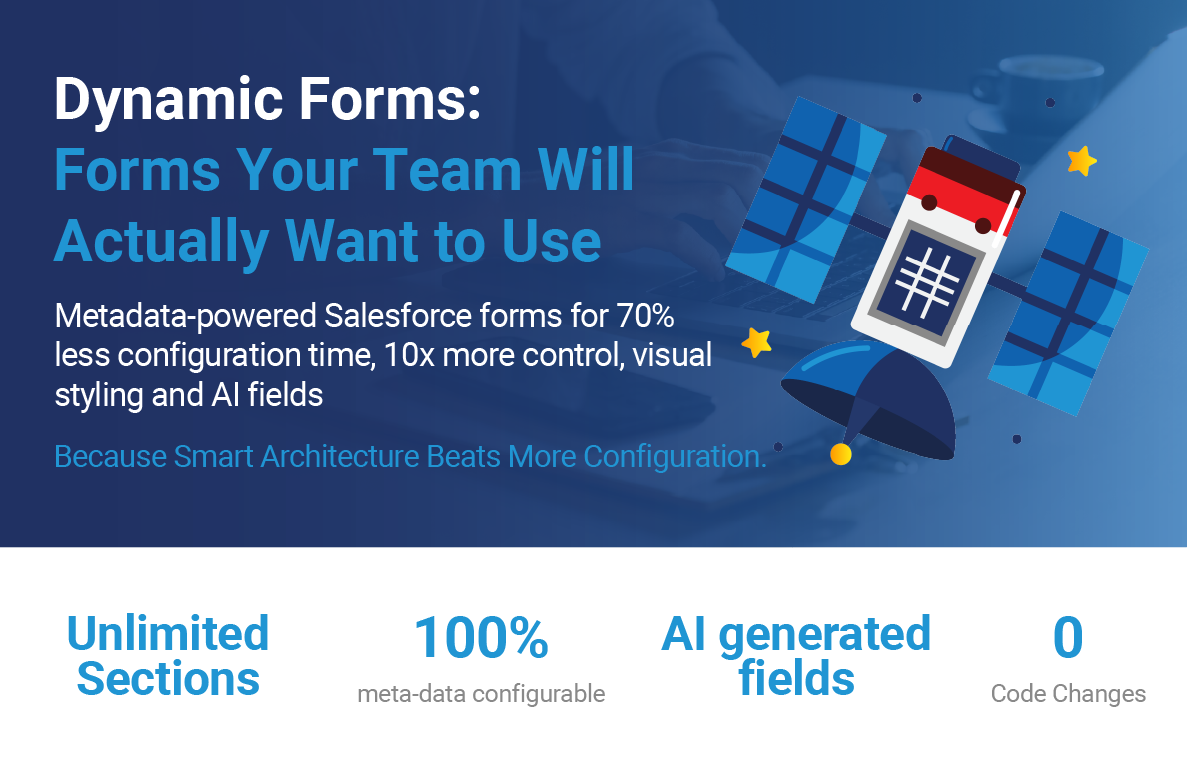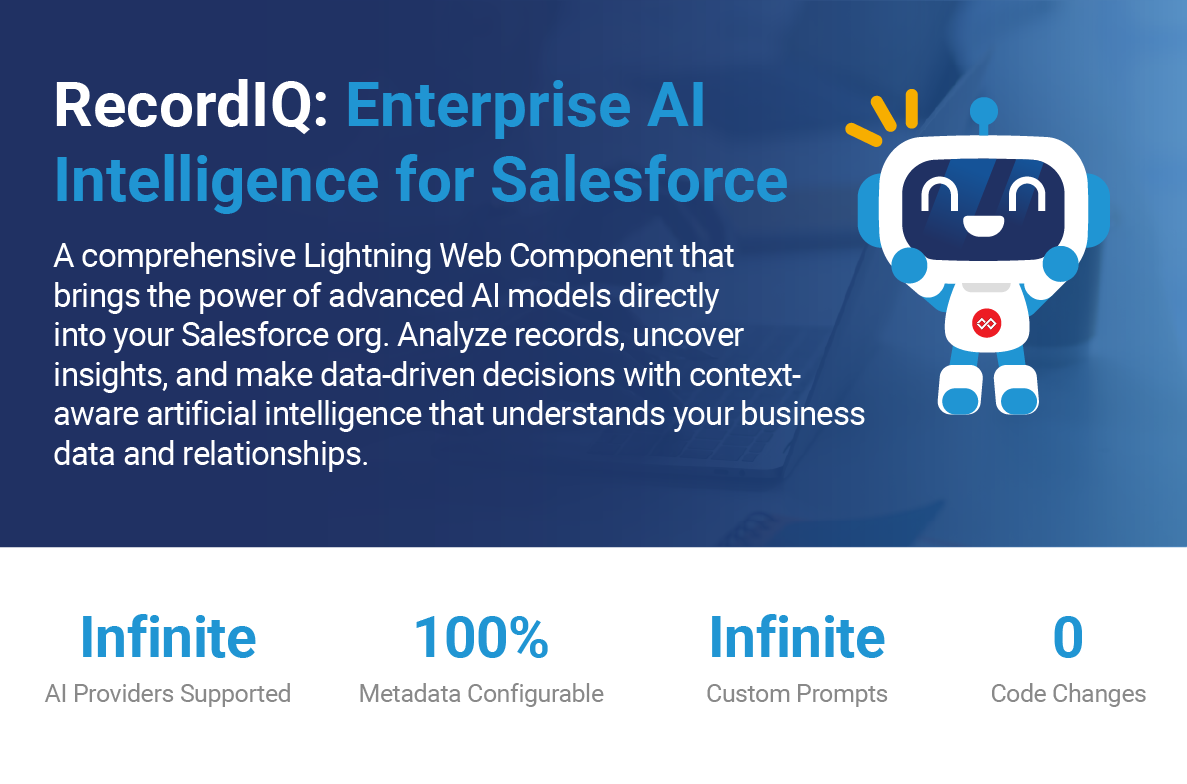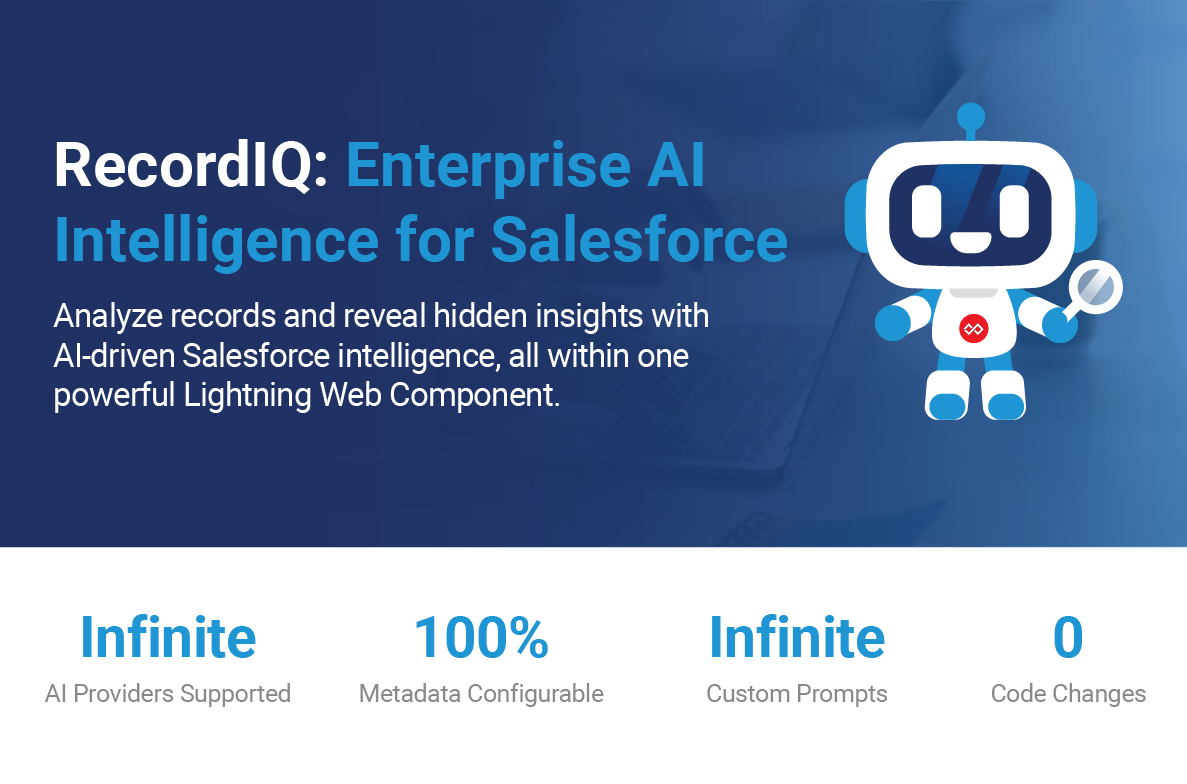The Power of Metadata-Driven Forms
If you've spent any time configuring Salesforce page layouts, you know the frustration. You need different fields visible for different teams. Your executives want a cleaner view than your data entry staff. That currency field needs to stand out, but there's no way to make it green when positive. And don't even get started on managing fifteen different record types across three business units.
What if you could reduce form configuration time by 70% while increasing field-level control by 10x? That's not hyperbole – it's what we've achieved with the VPC Dynamic Form Component, a metadata-driven solution that transforms how organizations approach Salesforce form design.
The Problem with Traditional Page Layouts
Let's be honest about standard Salesforce page layouts. They're functional, but they're also:
- Inflexible: One size fits all approaches rarely fit anyone well
- Visually monotonous: Every field looks identical, making critical data blend into the background
- Maintenance-heavy: Managing multiple layouts across record types becomes a full-time job
- Limited in conditional logic: You can't style that overdue amount in red or highlight high-priority fields
Consider this scenario: A global sales organization with five regional teams, each needing slightly different opportunity layouts. The APAC team needs to see fields in a different order than EMEA. The Americas team wants key metrics highlighted in green when they're trending positive. Everyone wants their most-used fields at the top, but those differ by role.
In standard Salesforce, you'd need to create and maintain 15+ page layouts, and you still couldn't achieve the visual differentiation teams are requesting.
Enter Metadata-Driven Architecture
The VPC Dynamic Form Component flips the script entirely. Instead of wrestling with page layout editor limitations, you define your forms through custom metadata types that provide granular control at three levels:
1. Object Section Configuration
This metadata type defines sections of fields that can be:
- Filtered by record type automatically
- Assigned to specific fieldsets
- Set as read-only at the section level
- Displayed conditionally based on business logic
2. Field-Level Configuration (VPC_Section_Field__mdt)
Here's where the magic happens. Each field can have:
- Custom labels without changing the actual field label
- Individual styling (font size, color, background)
- AI generation capabilities (more on this in Part 2)
- Specific ordering independent of field creation order
- Prompt templates for intelligent content generation
3. Component Property Configuration
The Lightning component itself offers 20+ configuration properties including:
- Multi-column layouts (1-4 columns)
- Three color scheme options (Org, Object, Custom)
- Bubble labels with drop shadows
- Currency and numeric value color coding
- Field underlines and borders
Real-World Implementation: Sales Transformation
Let me share how, a B2B software company, transformed their opportunity management using VPC Dynamic Forms.
The Challenge
The sales team was struggling with:
- 60% of opportunities had incomplete data
- Sales reps spent 45 minutes per day searching for fields
- Regional managers couldn't get consistent reporting
- New rep onboarding took 3 weeks due to UI complexity
The Solution Architecture
We implemented a three-tier form structure:
Executive Dashboard Section
- Fields: Amount, Probability, Close Date, Stage
- Layout: 4 columns
- Styling: Bubble labels, currency in green/red, bold labels
Deal Details Section
- Fields: Product Interest, Competitor, Decision Criteria
- Layout: 2 columns
- Features: AI-powered field generation for competitor analysis
Activity Tracking Section
- Fields: Last Activity, Next Step, Days in Stage
- Layout: 1 column
- Styling: Overdue items in red, upcoming in orange
Configuration Example
Here's how we configured the Amount field to show visual indicators:
Section Record:
- Field Label: "Deal Value (USD)"
- Field Data Font Size: "18px"
- Field Data Text Color: (left null to use component defaults)
- Generate With AI: false
Component Properties:
- Enable Custom Currency Colors: true
- Positive Currency Color: "#2e844a" (green)
- Negative Currency Color: "#c23934" (red)
The Results
After 30 days:
- Data completeness: Improved from 40% to 85%
- Time to find fields: Reduced by 65%
- New rep onboarding: Decreased from 3 weeks to 4 days
- User satisfaction scores: Increased by 42%
The sales operations manager reported: "We've finally achieved what we've been trying to do for years – make Salesforce layouts that sales reps actually want to use."
Technical Deep Dive: How It Works
The component's architecture prioritizes performance and flexibility:
1. Metadata Loading Strategy
The component loads configuration once and caches it, reducing server calls by 80% compared to multiple standard components.
2. Smart Record Type Detection
Forms automatically adapt to record types without manual intervention.
3. Field-Level Edit Capability
Unlike standard layouts where you edit entire records, VPC Dynamic Forms enable field-by-field editing:
This reduces the risk of accidental changes and improves the user experience on long forms.
Performance Advantages
Our benchmarking shows significant performance improvements:
|
Metric |
Standard Layout |
Dynamic Form |
Improvement |
|
Initial Load Time |
3.2s |
1.8s |
44% faster |
|
Field Search Time |
8s average |
<1s |
87% faster |
|
Save Operation |
2.5s |
0.8s |
68% faster |
|
Configuration Time |
45 min |
12 min |
73% reduction |
Security & Governance
The component respects all Salesforce security models:
- Field-level security is enforced
- Record-level sharing rules apply
- Validation rules fire normally
- Audit trails capture all changes
Additionally, the metadata-driven approach provides:
- Version control capability through metadata deployment
- Bulk configuration updates via data loader
- Clear separation of concerns between UI and data
Migration Path from Standard Layouts
Moving from standard page layouts to VPC Dynamic Forms doesn't have to be disruptive:
- Audit Current Layouts: Document which fields appear where
- Create Metadata Records: Start with your most complex layout
- Parallel Run: Keep standard layouts while testing Dynamic Forms
- Gradual Rollout: Deploy to power users first, then expand
- Retire Legacy Layouts: Remove standard layouts once stable
The ROI Calculation
For a 100-user organization:
- Configuration time saved: 30 hours/month × $75/hour = $2,250
- User productivity gains: 30 min/day × 100 users × $50/hour = $62,500/month
- Reduced training costs: 2 weeks to 3 days = $15,000 saved per new hire
- Total monthly ROI: $64,750
Common Objections Addressed
"This seems complex to set up" The initial setup takes 2-3 hours. Compare that to maintaining dozens of page layouts over time.
"What about Lightning App Builder?" Dynamic Forms complement LAB. Use LAB for page structure, Dynamic Forms for field-level control.
"Will this scale?" Its' simple architecture and design means no custom development, low overhead and limited technical debt.
Looking Ahead
This is just the beginning. In Part 2, we'll explore how AI integration transforms field population from a manual chore into an intelligent, context-aware process that actually improves data quality while saving time.
The Dynamic Form Component represents a fundamental shift in how we think about forms in Salesforce. It's not about replacing standard functionality – it's about extending it in ways that deliver immediate, measurable value to your users and your business.
Ready to break free from layout limitations? Start by identifying your most problematic page layout and mapping out how metadata-driven configuration could solve those pain points. Your users (and your admin team) will thank you.



